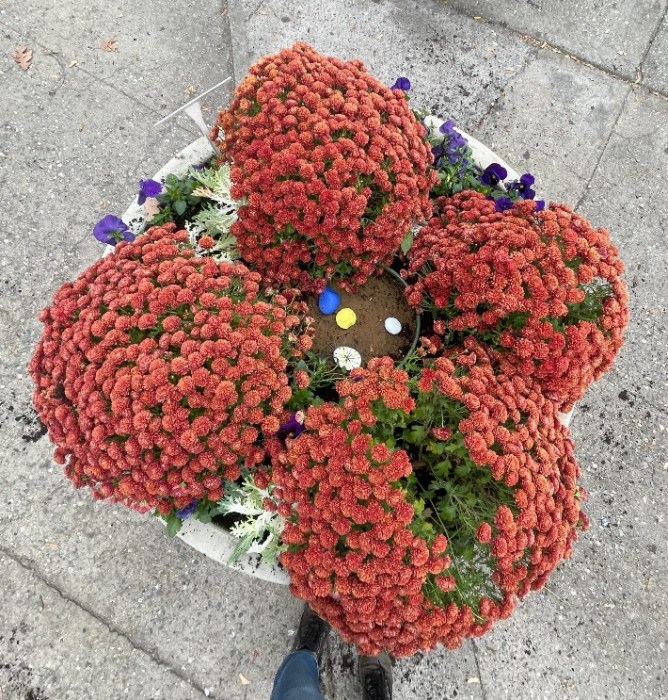Brooklyn’s pedestrian plazas will be quite literally buzzing with activity this spring as the city expands The Pollinator Port Project, a program to offer refuge to local bees and other pollinators.
Bees flying between the borough’s green spaces will be able to take a rest and some refreshment at new “bee hotels” and “bee bunkers” at Parkside Plaza and the Gates Avenue pedestrian plaza, the Department of Transportation announced Thursday.

The bee hotels — which don’t require any reservations, luckily for travel-weary insects — are filled with reeds and natural materials for bees to deposit their larvae and rest. Female bees will lay eggs in the hotels throughout the summer and provide food for their baby bees to grow before they’re ready to take on the big city.
Bee bunkers will be placed inside existing planters at the plazas, offering burrowing bees a protected place to build nests and lay eggs. The larvae then stay safe and warm in the soil until the spring.
The insect infrastructure will be accompanied by flowers and native vegetation so bees and other insects like butterflies can stop for a drink.

“Our Open Streets and public plazas have always buzzed with activity, but this year they’re going to be the bee’s knees,” said NYC DOT Commissioner Ydanis Rodriguez, in a statement. “Bees are essential for the health of our planet, and this initiative will create habitats for at-risk native bee populations and help facilitate important scientific research.”
New York City offers fewer habitats for bees than other ecosystems, and the critically-important bugs often have long journeys between parks and other greenspaces, according to the DOT. Bee hotels and bunkers support their populations and are expected to attract native tickle bees — which rarely sting.
The habitats will also allow researchers from Rutgers University to study the Big Apple’s bees, their population sizes, and their movements.
The Pollinator Port Project was piloted at Parkside Plaza and Fordham Plaza in the Bronx last year — two large spaces where the program would have an immediate effect, said Jeremy Jungels, senior director of horticulture at The Horticultural Society of New York.

This year, seven plazas across the five boroughs will play host to the bees as the city experiments with new plants and elements.
“Through this work, we are creating living spaces for native bee pollinators in the city, including both flowers and appropriate nesting sites,” said Dr. Kimberly N. Russell of the Department of Ecology, Evolution and Natural Resources at Rutgers University, New Brunswick. “Most bee species cannot live in hives, so we need to give them other materials to build their homes. The initial stages of this project have been about using science to design habitats – Bee Bunkers and Bee Barrels (with attached Bee Hotels) with the highest likelihood of success. Our hope is that these Pollinator Ports connect green spaces, giving bees the resources they need to move around the city and pollinate our flowers.”


















